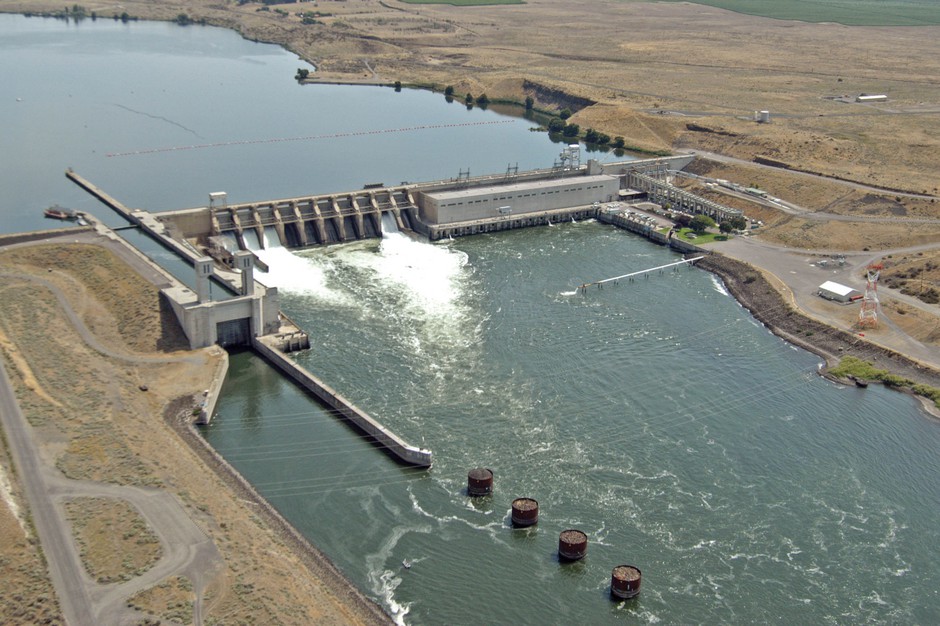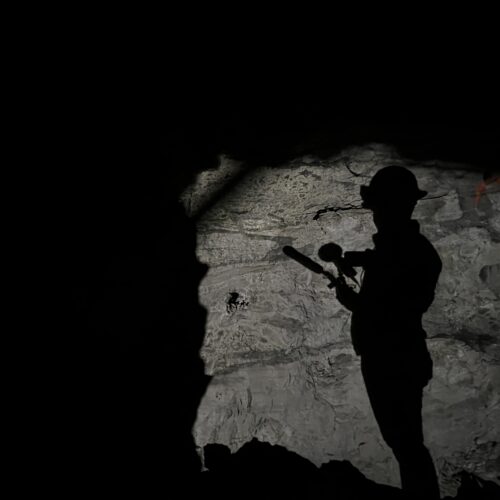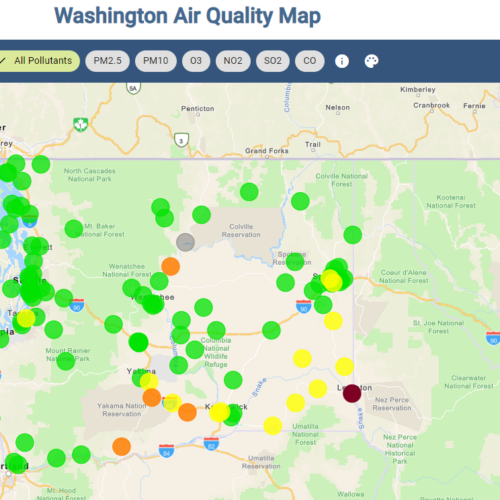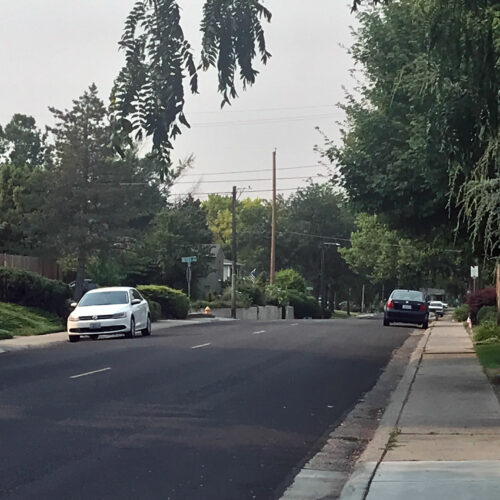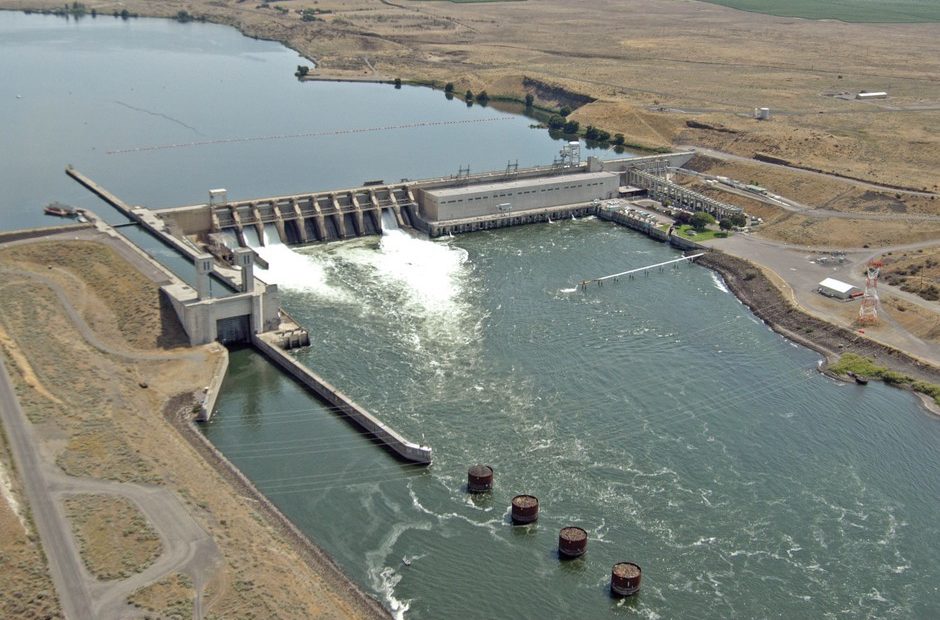
New Hydroelectric Turbine Design Aims To Improve Fish Passage At Snake River Dams
READ ON
For years, engineers with the U.S. Army Corps of Engineers have worked to design a hydroelectric turbine that’s safer for fish. They’ve recently installed a new design that’s improving energy efficiency and improving fish survival along the Snake River, with plans to upgrade more turbines over the next several years.
The Army Corps installed the first of two designs at Ice Harbor Dam, just outside the Tri-Cities in southeastern Washington. A second blade design should be finished in 2021.
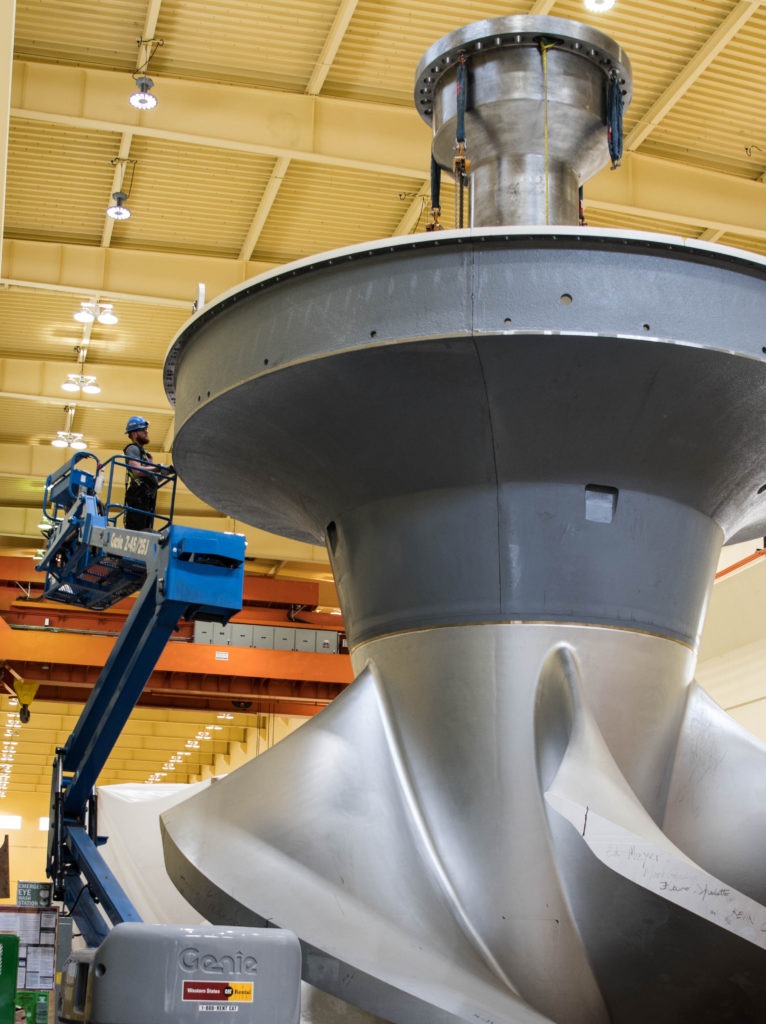
Workers at Ice Harbor Dam on the Snake River inspect a new turbine prior to installation. CREDIT: U.S. Army Corps of Engineers
“It really is a new generation of turbine design for our hydropower system,” said the Corps’ Martin Ahmann. He’s helped to design these new turbines for most of his career.
This new turbine has been shown to increase juvenile fish survival rate to more than 98%.
“It allows us in the future, an opportunity to reduce our dependency on spill, fish passage and the need for screening our turbine intake to keep fish out of the turbines,” Ahmann said. “We see this as a viable passage route for juvenile salmon.”
Pacific Northwest National Laboratory in Richland, Washington, used specially-designed mechanical fish, known as sensor fish, to test the pressure and blade strikes that fish could experience. Designers also tested the turbine blades with live fish, Ahmann said.
The new design will also increase energy efficiency by four percent – that’s enough to power 3,000 homes.
“Improvements that we make for fish generally result in improved efficiency for power,” Ahmann said.
The first turbine design is what’s known as a fixed-blade turbine, which works much like a boat propeller, Ahmann said. The second design will feature an adjustable blade design, where the blades on the propeller pitch to make the turbine more efficient.
The Army Corps plans on installing 14 new turbines at McNary Dam and 16 turbines at John Day Dam — both on the Columbia River — over the next several years.
Related Stories:
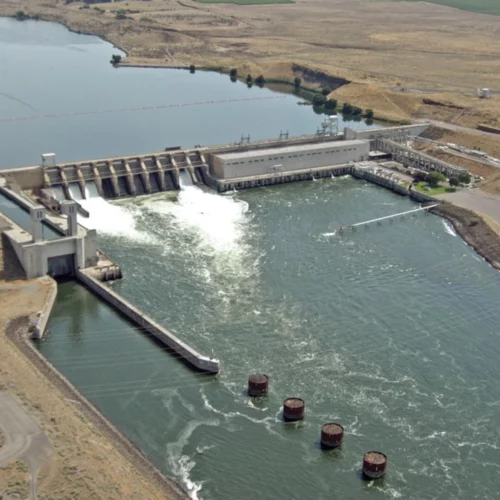
Historic agreement seen as a harbinger to Snake River dam removal
Ice Harbor Dam on the Snake River. Gov. Jay Inslee and U.S. Sen. Patty Murray said removing the four dams on the Lower Snake isn’t feasible right now. CREDIT: Bonneville
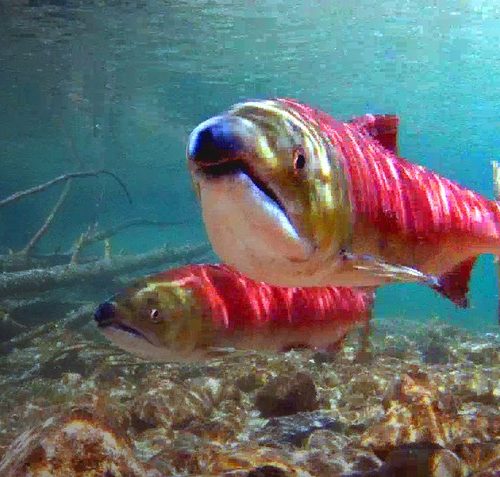
Tribal members gather to demand U.S. Government fulfill treaty obligations
Sockeye salmon like these are among the salmon species in peril. (Credit: Aaron Kunz) Listen (Runtime 2:57) Read For Northwest tribes, removing the four lower Snake River dams means more
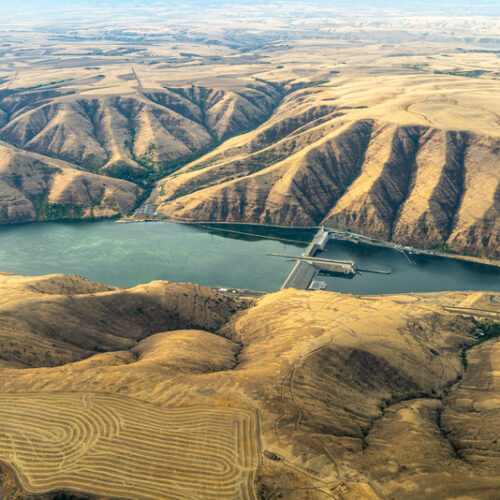
Flying high for conservation, EcoFlight soars above the Northwest
Lower Granite Dam on the Snake River. (Courtesy: EcoFlight) Listen (Runtime 1:34) Read For more than 40 years, Bruce Gordon has flown people over wild lands and wildlife habitats across

